Simulation Standard Technical Journal
A Journal for Process and Device Engineers
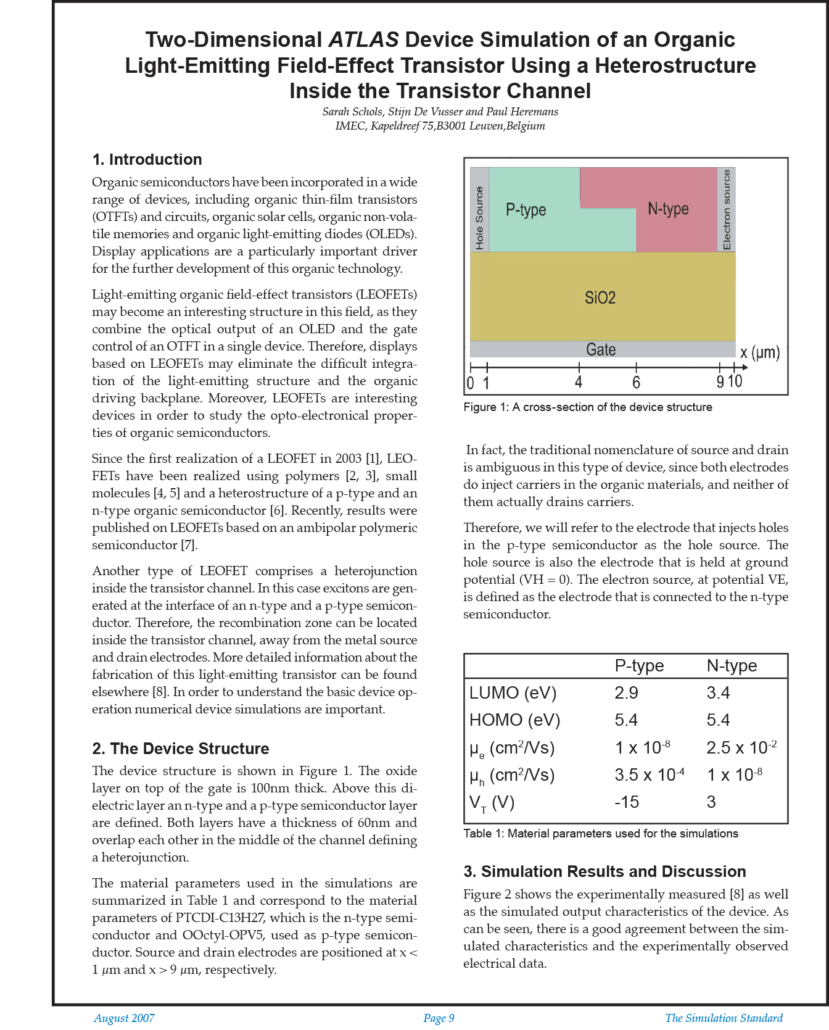
Two-Dimensional Atlas Device Simulation of an Organic Light-Emitting Field-Effect Transistor Using a Heterostructure Inside the Transistor Channel
1. Introduction
Organic semiconductors have been incorporated in a wide range of devices, including organic thin-film transistors (OTFTs) and circuits, organic solar cells, organic non-volatile memories and organic light-emitting diodes (OLEDs). Display applications are a particularly important driver for the further development of this organic technology.
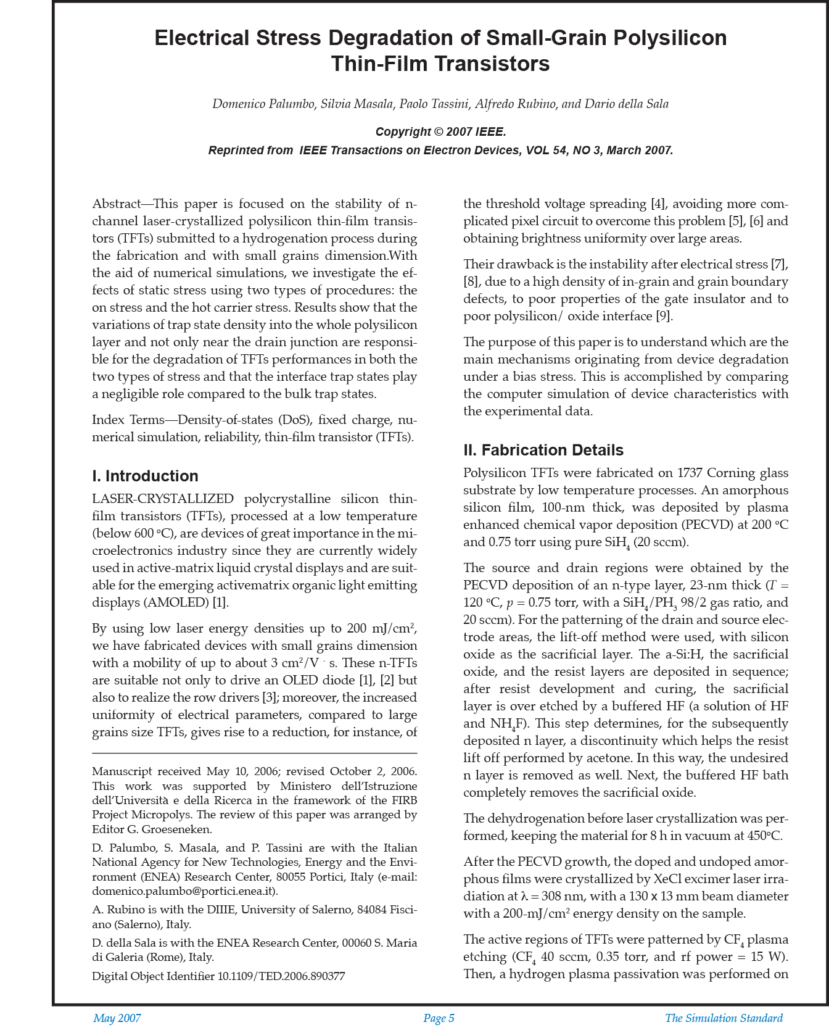
Electrical Stress Degradation of Small-Grain Polysilicon Thin-Film Transistors
Abstract
This paper is focused on the stability of n-channel laser-crystallized polysilicon thin-film transistors (TFTs) submitted to a hydrogenation process during the fabrication and with small grains dimension. With the aid of numerical simulations, we investigate the effects of static stress using two types of procedures: the on stress and the hot carrier stress. Results show that the variations of trap state density into the whole polysilicon layer and not only near the drain junction are responsible for the degradation of TFTs performances in both the two types of stress and that the interface trap states play a negligible role compared to the bulk trap states.

Trapping Effects in the Transient Response of AlGaN/GaN HEMT Devices
In this paper, the transient analysis of an AlGaN/GaN high-electron mobility transistor (HEMT) device is presented. Drain–current dispersion effects are investigated when gate or drain voltages are pulsed. Gate-lag and drain-lag turn-on measurements are analyzed, revealing clear mechanisms of current collapse and related dispersion effects. Numerical 2-D transient simulations considering surface traps effects in a physical HEMT model have also been carried out.
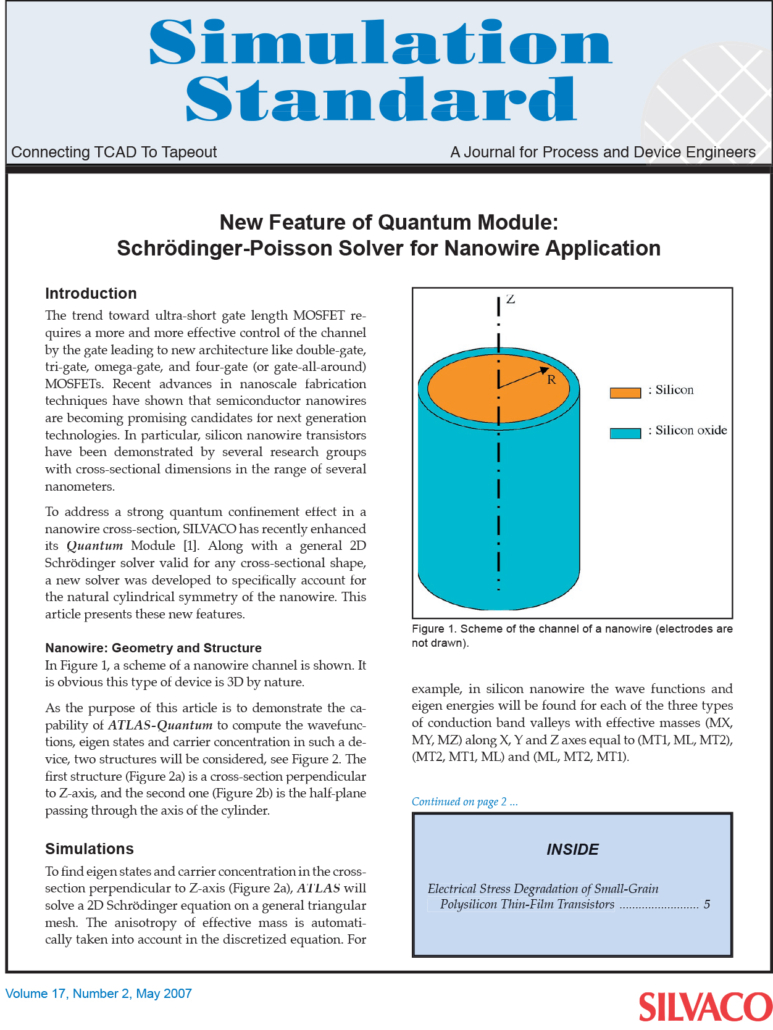
New Feature of Quantum Module: Schrödinger-Poisson Solver for Nanowire Application
Introduction
The trend toward ultra-short gate length MOSFET requires a more and more effective control of the channel by the gate leading to new architecture like double-gate, tri-gate, omega-gate, and four-gate (or gate-all-around) MOSFETs. Recent advances in nanoscale fabrication techniques have shown that semiconductor nanowires are becoming promising candidates for next generation technologies. In particular, silicon nanowire transistors have been demonstrated by several research groups with cross-sectional dimensions in the range of several nanometers.
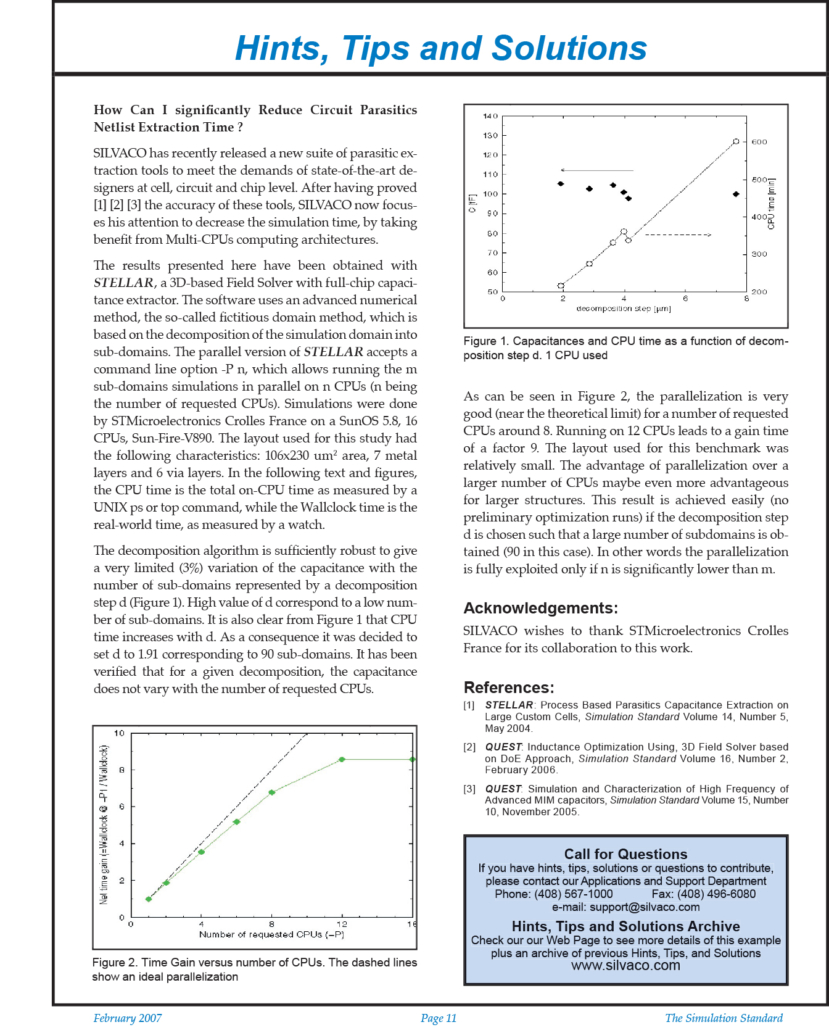
How Can I significantly Reduce Circuit Parasitics Netlist Extraction Time?
How Can I significantly Reduce Circuit Parasitics Netlist Extraction Time?
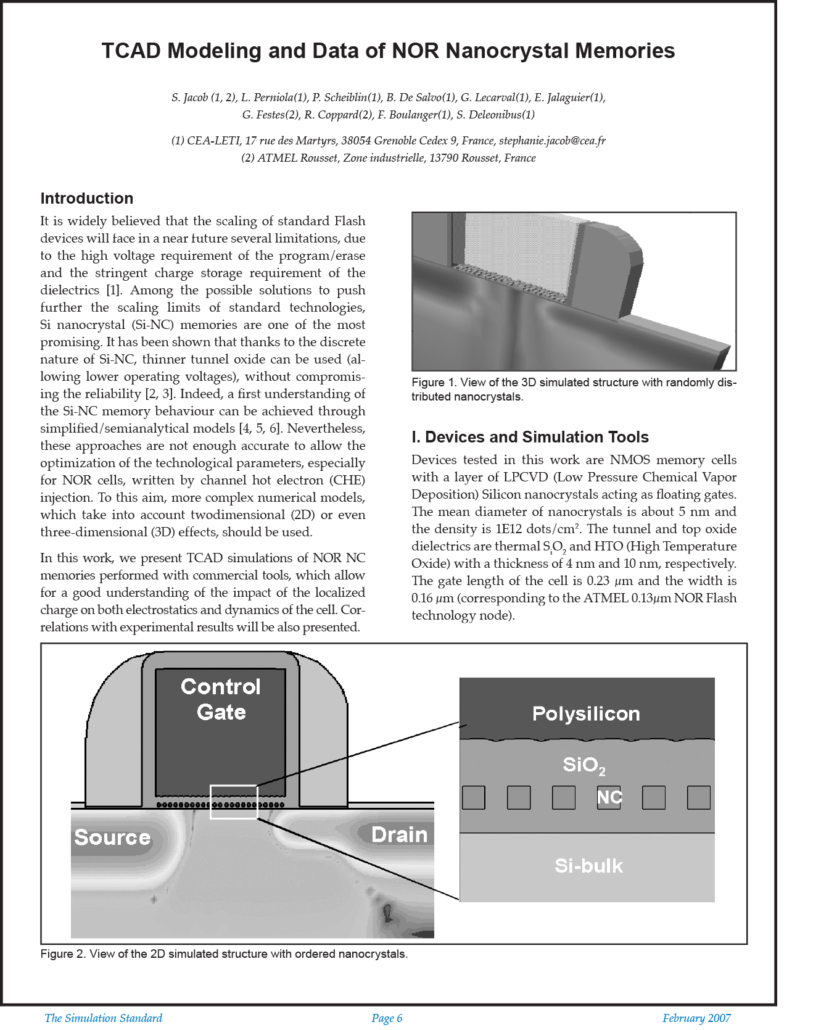
TCAD Modeling and Data of NOR Nanocrystal Memories
Introduction
It is widely believed that the scaling of standard Flash devices will face in a near future several limitations, due to the high voltage requirement of the program/erase and the stringent charge storage requirement of the dielectrics [1]. Among the possible solutions to push further the scaling limits of standard technologies, Si nanocrystal (Si-NC) memories are one of the most promising. It has been shown that thanks to the discrete nature of Si-NC, thinner tunnel oxide can be used (allowing lower operating voltages), without compromising the reliability [2, 3]. Indeed, a first understanding of the Si-NC memory behaviour can be achieved through simplified/semianalytical models [4, 5, 6]. Nevertheless, these approaches are not enough accurate to allow the optimization of the technological parameters, especially for NOR cells, written by channel hot electron (CHE) injection. To this aim, more complex numerical models, which take into account twodimensional (2D) or even three-dimensional (3D) effects, should be used.

